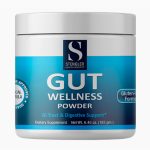In today's fast-paced world, finding time to go to the gym can be a significant challenge. However, building muscle doesn't necessitate a gym membership or a vast array of equipment. You can achieve impressive muscle growth from the comfort of your home with the right approach, consistently following a structured workout plan, and maintaining an optimal diet. This article delves into practical strategies for building muscle at home, the importance of nutrition, and the role of recovery, aiming to provide a comprehensive guide to achieving your fitness goals.
Setting the Foundation for Home Workouts
The journey to building muscle begins with a solid understanding of your body and its requirements. Before diving into any exercise regimen, it's crucial to consult with a certified fitness professional. Meeting with an exercise physiologist or a certified personal trainer can help tailor a workout plan that aligns with your fitness goals, addresses any chronic conditions or injuries, and ensures that you use the proper form to prevent injuries. Adequate guidance at the start can significantly enhance the effectiveness of your workouts and optimize your results.
Effective Home Workout Routines
You can make significant muscle gains without extensive equipment with the right workout routine. Start with bodyweight exercises like pushups, lunges, squats, and planks, which can be performed anywhere and are highly effective for muscle building. Resistance bands are another excellent tool; they are lightweight, affordable, and versatile, allowing you to add resistance to various exercises as you progress.
To further challenge your muscles and stimulate growth, consider investing in a few pieces of fitness equipment. Dumbbells, kettlebells, TRX straps, and an exercise ball can add variety to your workouts and help target different muscle groups more effectively. The key is to progressively increase the difficulty of your workouts by increasing the weight you lift or decreasing the length of your resistance bands, ensuring consistent muscle overload.
The Science of Muscle Growth
Building muscle is not just about lifting weights; it involves understanding the principles of resistance training and nutrition. Two critical factors influence muscle growth: training volume and intensity. Training volume refers to the total number of sets and reps performed per exercise, while intensity relates to how close you bring your muscles to failure during each set.
Balancing Volume and Intensity
It's essential to balance training volume and intensity for optimal muscle growth. High-intensity training involves taking sets to the point where your muscles cannot perform one more repetition without altering your technique. However, this should be paired with moderate to high training volume to maximize muscle hypertrophy.
A typical muscle-building program might involve working larger muscle groups with roughly 15-20 sets per week and smaller muscle groups with around 9-12 sets per week, keeping each set in the six—to 15-rep range. Progressive overload is key; you should continually challenge your muscles by increasing the weight, the number of reps, or the intensity of your workouts over time.
The Role of Nutrition in Muscle Building
No matter how rigorous your workout routine is, without the proper nutrition, muscle growth will be limited. Protein is the cornerstone of muscle building, providing the amino acids necessary for muscle repair and growth. Aim for a protein intake of around one gram per pound of body weight daily, although as little as 0.74 grams per pound can also be effective.
Carbohydrates and fats are also essential components of a muscle-building diet. Carbohydrates provide energy for intense workouts, while healthy fats support hormone production and overall health. Focus on whole-food sources of carbs such as fruits, root vegetables, legumes, and minimally processed grains to fuel your workouts without excessive calorie intake.
To support muscle growth, your calorie intake should exceed your daily energy expenditure, but not too much. Aim for a balanced diet with high-quality protein, carbohydrates, and fats to support your training and recovery.
Recovery: The Unsung Hero of Muscle Building
Rest and recovery are often overlooked but are critical components of any muscle-building program. Weight training essentially breaks down muscle tissue, and during rest, the body repairs and strengthens these tissues, leading to muscle growth.
The Importance of Rest Days
A well-structured training program should include three to four training days and an equal number of weekly rest days. Total rest allows for optimal recovery, but active recovery, involving lower-intensity activities like walking, light jogging, or yoga, can also be beneficial. These activities promote blood flow and help alleviate muscle soreness without hindering recovery.
Sleep and Muscle Growth
Adequate sleep is paramount for muscle recovery and growth. Aim for seven to nine hours of sleep per night to support muscle repair, hormone production, and overall well-being. Insufficient sleep can negatively affect muscle mass and strength, so prioritize good sleep hygiene as part of your muscle-building strategy.
Sample Muscle-Building Workout Plan
To give you a practical starting point, here is a sample workout plan that balances volume, intensity, and recovery, designed to be performed at home with minimal equipment.
Day 1: Upper Body
- Pushups: 4 sets of 10-15 reps
- Resistance Band Rows: 3 sets of 12-15 reps
- Dumbbell Shoulder Press: 3 sets of 10-12 reps
- Bicep Curls (with dumbbells or resistance bands): 3 sets of 12-15 reps
- Tricep Dips (using a chair): 3 sets of 12-15 reps
Day 2: Lower Body
- Squats: 4 sets of 12-15 reps
- Lunges: 3 sets of 10-12 reps per leg
- Deadlifts (with dumbbells): 3 sets of 12-15 reps
- Calf Raises: 3 sets of 15-20 reps
Day 3: Active Recovery
- Light cardio (walking or jogging): 30 minutes
- Stretching or yoga: 20-30 minutes
Day 4: Upper Body
- Incline Pushups: 4 sets of 10-15 reps
- Bent Over Rows (with dumbbells): 3 sets of 12-15 reps
- Resistance Band Lateral Raises: 3 sets of 12-15 reps
- Hammer Curls (with dumbbells): 3 sets of 12-15 reps
- Tricep Extensions (with resistance bands): 3 sets of 12-15 reps
Day 5: Lower Body
- Bulgarian Split Squats: 3 sets of 10-12 reps per leg
- Glute Bridges: 3 sets of 15-20 reps
- Dumbbell Sumo Squats: 3 sets of 12-15 reps
- Hamstring Curls (using a stability ball): 3 sets of 12-15 reps
Day 6: Active Recovery
- Light cardio (cycling or walking): 30 minutes
- Stretching or foam rolling: 20-30 minutes
Day 7: Rest
- Complete rest or a leisurely walk
Staying Consistent and Motivated
Building muscle at home requires consistency, dedication, and patience. Tracking your workouts, diet, and progress can help maintain motivation and ensure you stay on track. Recording your exercises, sets, reps, and weights in a journal allows you to monitor your progress and make necessary adjustments to your routine.
The Role of Online Resources
While working out at home, you must be cautious about the online workout videos and programs you follow. Not all online sources are safe or effective, particularly if you have specific injuries or conditions. Research your sources carefully and consider consulting with a fitness professional to ensure your workouts fit your goals and fitness level.
Conclusion
Building muscle at home is feasible with the right approach, consistent effort, and a balanced diet. You can achieve significant muscle growth without stepping foot in a gym by focusing on effective bodyweight and resistance band exercises, progressively increasing your training volume and intensity, and ensuring adequate nutrition and recovery. Remember, the journey to building muscle is a marathon, not a sprint; stay dedicated, stay consistent, and enjoy becoming a more robust, healthier version of yourself.
For further reading on effective muscle-building techniques and nutritional strategies, check out these resources, guides, and articles from reputable fitness and health websites. Keep striving for your goals, and the results will follow.










